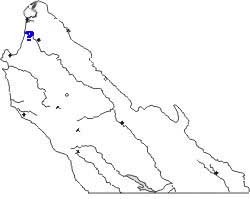| |
|
|
SAN FRANCISCO FORKTAIL
Ischnura
gemina
|
|
Everything that we currently know about
this species suggests that
it is now extinct in Monterey County. It was 'interbred' out of local
existence
by the very closely rated Black-fronted Forktail Ischnura
denticollis,
whose range has been moving north for decades.
|
|
| On 11 Aug 1946, somewhere along the lower
Salinas River in Monterey
County, B. Elwood Montgomery collected a male and a female I. gemina.
Montgomery
was a renowned odonatist from Indiana. [I don't known why he was
visiting
Monterey.] He identified the species in-hand and placed them in
separate
3x5 envelopes. This identification was later verified by M.J. Westfall.
Today the envelopes with their specimens are held by Florida State
University. [I am indebted to Bill Mauffray
of the International Odonata
Research Institute, Gainesville, Florida, for this information.]
There have been no further records of this
species within MTY since
1946. Grad students from S.F. State Univ. searched for it in the 1980s,
without success. A few limited searches along the lower Salinas River
in
2006, including at the Salinas R. mouth, also failed to locate any.
Upstream,
only Black-fronted Forktails were found.
|
| San Francisco Forktail is nearly identical
to Black-fronted Forktail.
Indeed, the species name "gemina" was given since it was a virtual twin
of I. denticollis. This identification problem is discussed on
the Black-fronted
Forktail page, and in Manolis (2003). San Francisco Forktail has a
very limited range around the San Francisco Bay area, and extending
north
to southern Sonoma County. Monterey County was once considered the
southern
edge of its range, but this is no longer the case. The southern
portion
of its range is now inhabited by Black-fronted Forktail, which appears
to out-compete the more local species. The two are known to interbreed,
and
this hybridization appears to have 'interbred' I. gemina out of
existence in the southern portion of its range. Whether any of this may
relate to global warming is not known. Changing habitats and
urbanization
may also be contributing causes. |
|
| Dr. John Hafernik of San Francisco
State University advises that
"our recent work in the SF Bay Area suggests that the range of I.
denticollis
has shifted northward [in recent decades] with it mostly replacing I.
gemina in the South Bay." Graduate student Vicki Moore is working
on
the molecular genetics of the hybrid zone with I. denticollis.
We
may expect published information on the changing ranges of these
species
in the future. |
|
| As Black-fronted is known to be replacing
San Francisco Forktail
around south San Francisco Bay currently, this suggests that the
replacement
occurred in MTY several decades ago. Under that hypothesis, none would
be left in MTY.
However, local surveys have been quite
limited. It is not impossible
that a relic population of S.F. Forktail might still exist in brackish
marshes at the Salinas River mouth or around Elkhorn Slough. You might
say that the "jury is still out" — but it doesn't look good for those
hoping
to see I. gemina in Monterey. . . .
|
|
 The
map shows the probable location of the MTY specimens back in 1946. The
label says only "Salinas River" but the species preference for brackish
waters elsewhere suggests it may have been near the Salinas River
mouth. The
map shows the probable location of the MTY specimens back in 1946. The
label says only "Salinas River" but the species preference for brackish
waters elsewhere suggests it may have been near the Salinas River
mouth.
The MTY specimens were collected on 11
August. Elsewhere in California,
San Francisco Forktails are flying from March to November (Manolis
2003).
|
|
|
Literature cited:
- Manolis, T. 2003. Dragonflies and Damselflies of
California. Univ. of
Calif.
Press, Berkeley.
Web resources:
Major identification web sites with much information on California
odes include:
For sites with excellent photos to compare for identification or to
simply
enjoy, see:
Many of these sites have links to other useful pages. Kathy Biggs's
site
is particularly useful in her selection of links. |
|
All photos & text © Don Roberson
2007
TOP
|
|
|
|
|
|
|
|
|
